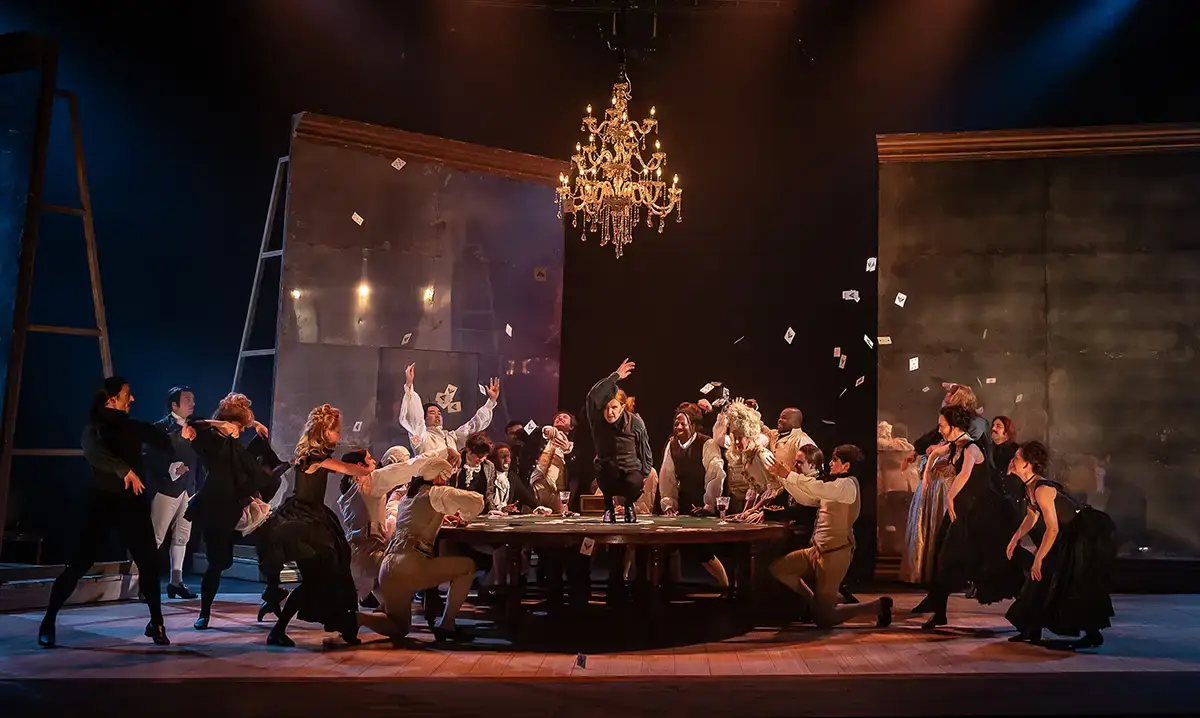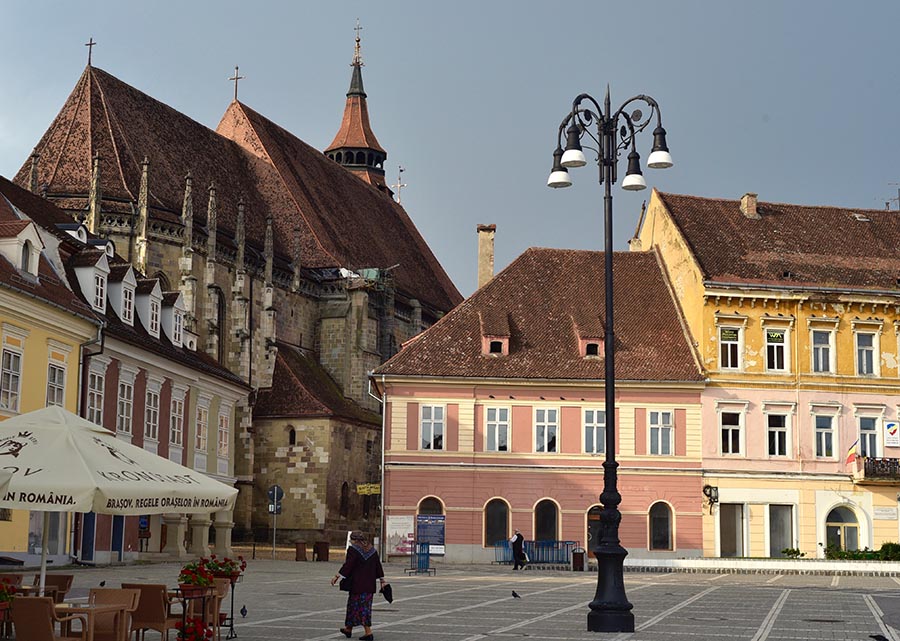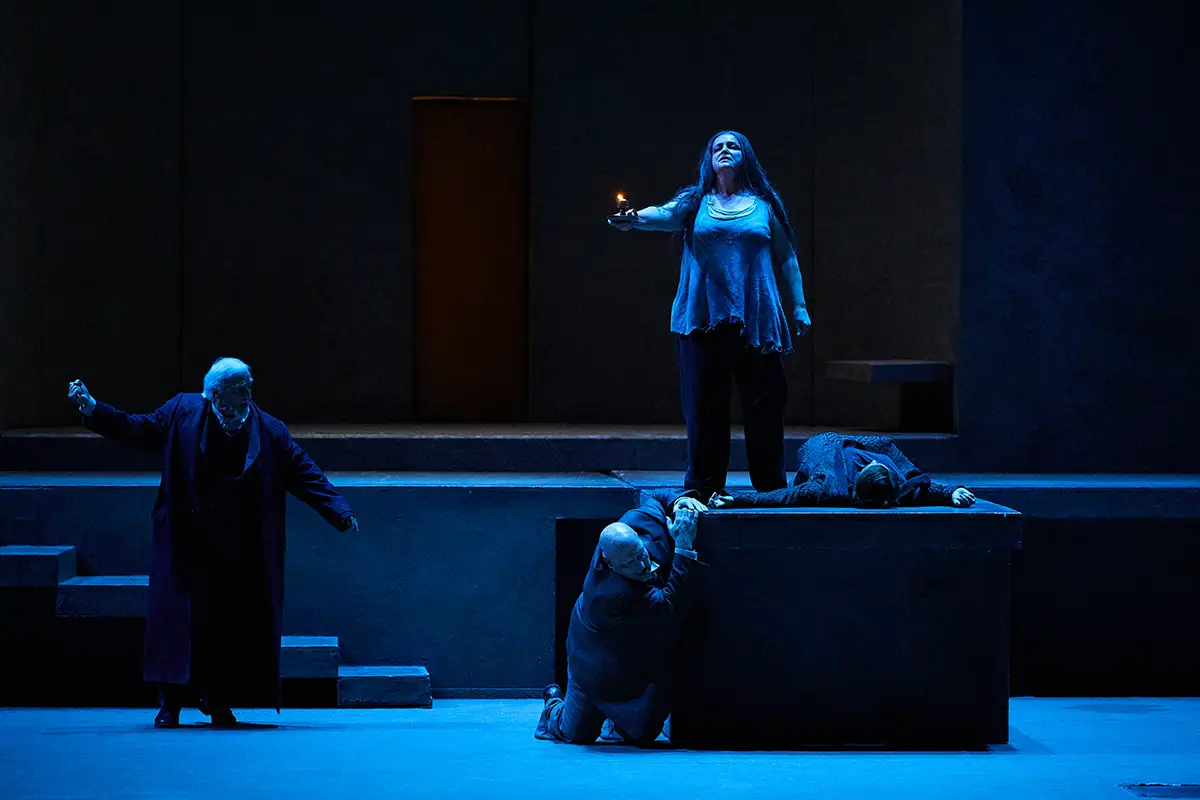Seen: June 27 June, Bratislava , Slovak National Theatre
Is opera an outdated genre? I urge you to see the Slovak National Theatre’s new production of Madama Butterfly and then argue that old operas have only limited relevance. The plot of this romantic tragedy is still as relevant as 120 years ago when Puccini’s masterwork had its world premiere at La Scala in Milan. The only difference is that sex tourism is more common today and to be had for bargain prices, practically just a long-haul flight away. Japan may no longer be the cheapest option for a fake wedding (Pinkerton boasts that Butterfly only cost 100 yen), but in Cambodia, Vietnam and Thailand you can take your pick from underage children as young as you like them. Let’s not forget that Cio-Cio San (Butterfly) tells us that she is only 15 years old, which doesn’t seem to bother Pinkerton. At least the American Consul Sharpless appears to be somewhat concerned about her young age and vulnerability.
American playwright David Belasco’s (apparently not very good) stage adaptation of John Luther Long’s original novel ‘Madame Butterfly’, which Puccini saw in London, doesn’t deal with the murkiest and most tragic aspects of prostitution. Rights issues initially stopped Puccini’s librettist Luigi Illia from adapting Belasco’s play. Instead Illia went to the source of the play; Pierre Loti’s ‘Madame Chrysantheme’ which had inspired John Luther Long’s novel and also influenced Delibes’ Lakmé.
Matúš Bachynec, the director of the Slovak National Opera Company’s production doesn’t feel it necessary to lecture the spectators by turning the American characters into stereotypes. In this day and age it would be very tempting to suggest that the visiting U.S Navy Lieutenant Pinkerton is a typical representative of the white colonial invader.
But there is no need to ‘improve’ Madama Butterfly by updating or re-conditioning the story, because the plot is as relevant today as it was a century ago. After all, this is a story about the clash of two seemingly irreconcilable, conflicting cultures. That hasn’t changed or dated one bit. Many differences persist between Eastern and Western cultures and their morales, despite ever increasing social interaction and trade between the continents.
Navy Lieutenant Pinkerton has bought a house on top of a hill in Nagasaki where he will marry his young bride and entertain the wedding guests. Stage designer Barbora Sajgalikova has given the house a modern look with glass and wood panels, bonsai trees and seating shaped like large and smooth white boulders.The servants in attendance are dressed like bell boys, house maids or 1960s stewardesses. Early on a bunch of male ‘tourists’ wander in, casually dressed in shorts and summer wear, as if they they had just embarked from a visiting cruise ship. They certainly don’t look like your typical wedding party. The men are given brochures which they leaf through. A bar cabinet with a scantily clad woman posing invitingly on top, is wheeled in. Is the director trying to tell us that this house doubles as an ochaya, a tea house where you are entertained by geishas?

Cio-Cio San (Linda Ballova) enters with her girlfriends making graceful, dancing hand movements. They are all dressed in colourful kimonos, signaling that they are indeed geishas. Butterfly sings that she comes from a family that was once well-to-do, but when they fell into poverty she started supporting herself as a geisha. Linda Ballova is a powerful lirico spinto soprano with an ability to shade her voice dramatically. She has no problems with the tricky vocal range of Un bel dì, vedremo (Act II) and most of the other arias. She moves well (without japanizing the role too much) and is a convincing actress. My only criticism is that she never really sounds like she’s 15 and Butterfly’s teenage excitement and angst doesn’t really come across*, The ¨roving Yankee¨Pinkerton (Tomáš Juhás) is as callous as they come, abandoning his Japanese bride after a night of (bondage!) pleasure. The American Consul (Pavol Remenár) is the voice of reason who empathizes with Butterfly and tries to dissuade Pinkerton from marrying Butterfly. The director demotes Suzuki (Terézia Kružliaková ) in the first act to the role of a cleaning lady, but by the second act she’s restored as Butterfly’s trusted personal maid.
One of the highlights of the first act is the arrival of The Bonze (Michel Onufer), Butterfly’s uncle who’s a Buddhist priest. An electrical failure throws the stage suddenly into darkness. Bonzo, dressed like an evil Kabuki stock character interrupts the proceedings accompanied by two characters making contorted dance moves, while holding flaming torches. The furious Bonzo denounces Butterfly for betraying her Buddhist religion and her people, but he gets pretty quickly rebuffed by Pinkerton.
The wedding night is quite brilliantly staged. I’m not sure how many people in the audience are familiar with shibari, originally a Japanese rope technique used to restrain prisoners. But since the 90s shibari has appeared all over the internet in seductive and artful bondage videos. Butterfly, who as a geisha should know a thing or two about submission fantasy play, introduces a long red velvety rope. Pinkerton appears to be passionately in love. Or maybe he’s just plain horny. A far too often somewhat staid love scene is transformed into something more kinky and imaginative. This Butterfly is not that easily pinned down.
The very long shibari ropes are once more slowly lowered from the fly tower during the vigil scene in Act II, part II, and it is an evocative reminder of the Pinkerton’s marriage bond(age). Butterfly ties herself in the ropes and I begin to wonder if she is going to kill herself with the rope instead of committing harakiri with with her father’s wakizashi (samurai sword), which she has inherited and with which he killed himself. Later, while Butterfly sings to her young son ( who is too occupied on his iPad to listen to her), Suzuki sneaks into the room, finds her employer’s sword and disappears with it.

Pinkerton re-appears after three years, with his American wife in tow, but he’s the worse for drink. Yes, he’s become remorseful, begs his wife for forgiveness, but she pushes him aside, offering to take care of Pinkerton and Cio-Cio San’s child. Once more, much of the action is happening in the background, without words. The vigil scene takes place in Butterfly’s bedroom, which has an en suite steam bathroom with glass doors. Here the young Pain (that’s the toddler’s name) is getting washed and pampered by a number of nurses. Pinkerton also has a steam bath at one point. Don’t ask me why.
When Butterfly realises that her wedding was nothing but a sham, she hands her son over to Pinkerton’s American wife. Now there’s not much left to live for. She looks for her father’s suicide weapon, but it’s gone. But she’s determined and the red shibari rope, that once literally tied her in a lover’s bond to her husband, finally becomes the symbol of her martyrdom.
This is very much in the spirit of Puccini, who wanted the staging to reflect ¨l’evidenza della situazione¨. This means that you can understand the action on the stage, without necessary understanding what is sung. In that sense this production by the Slovenské národné divadlo Opera company is very impressive. The ensemble, as well as the orchestra ( which sounded suitably italianate under the baton of Maroš Potokár , but sometimes drowned out the singers ) are of a standard that is clearly above the average and they deserve to be better known.

If tickets for the Vienna State Opera are sold out, you could always give this modern opera house in Bratislava (only an hour and a half’s journey from Vienna) with its very able opera ensemble a try. On top of anything else, ticket prices (and drinks) in Slovakia are more affordable than in Vienna.
Here’s a link to the remaining performances in October and November: https://snd.sk/en/inscenation/4113/madama-butterfly
Puccini is nowadays sometimes accused of cultural appropriation (both Butterfly and Turandot are set in exotic lcations). That accusation certainly isn’t true for Madama Butterfly, which is made very clear in this Slovak production of Madama Butterfly. Puccini did his homework and truly immersed himself in Japanese culture. He studied collections of Japanese and Chinese folk songs and borrowed a snippet of the Japanese imperial anthem. He even managed to persuade the Japanese ambassador’s wife to sing some Japanese songs to him and she also gave iom advise on japanese customs. Seven Japanese and Chinese melodies have been identified in Puccini’s score, but there are more passages where the composer has clearly been influenced by the pentatonic scale that is so prevalent in Eastern Asian music.
* Renata Scotto, one of the most legendary Cio-Cio Sans, debuted at 19 in the title role. It is very unusual for a young soprano to take on such a big and challenging role at such a young age.



